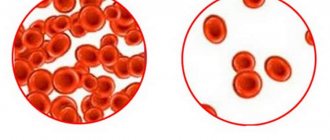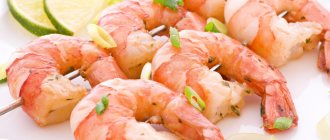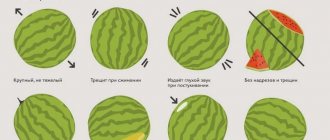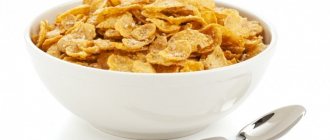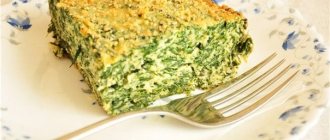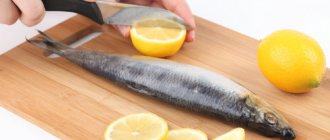Since the mother’s main task is to provide milk with vitamins, minerals and energy, it is not rational and useless to limit the menu to porridge and chicken broth. Even when breastfeeding, it is not recommended to completely exclude sweets, because carbohydrates are a source of strength and vitality.
Jam is an alternative to rolls and allergenic chocolate. With the right choice and moderate consumption, the product will not harm the baby, but will satisfy the mother’s needs for relieving nervous tension, fatigue and restful sleep due to the production of serotonin (the hormone of happiness) during the digestion of carbohydrates.
Benefit
Some useful elements in fresh fruits are unstable to high temperatures, so they are destroyed after heat treatment. But there are exceptions to this rule. For example, the finished jam retains a high concentration of B vitamins and ascorbic acid. The elements PP, E, A are also heat-resistant, so the boiled berries retain their antioxidant, rejuvenating, and protective properties.
The calorie content of the product directly depends on the amount of sugar added during cooking. The less refined sugar the recipe provides, the more benefits for the nursing mother and baby.
Jam has the following positive effects:
- recovery from emotional and physical costs;
- fight against insomnia;
- serotonin eliminates depression, fatigue;
- flavonoids relieve spasms, strengthen blood vessels, stimulate hematopoiesis:
- fiber removes toxins, helps absorb and digest food;
- B vitamins improve brain function and nervous reactions;
- polyphenols have a positive effect on the liver, reduce cholesterol levels (blueberry, strawberry, lingonberry, strawberry jam);
- prevention of tumor formations (apricot, raspberry, elderberry).
Pediatricians allow eating jam during breastfeeding as a source of vitamins to fortify milk.
The benefits of the product are determined by the norms of use. To eliminate the risks of allergies and disruption of the endocrine system, it is recommended to introduce different types of jam in certain months.
Jam for breastfeeding
If your baby is already 3 months old, you can begin to gradually introduce new foods. Most likely, by this moment his body had become sufficiently strong and adapted to the new conditions of existence. His intestines are also functioning normally, they are populated with the necessary microflora, and the colic has gone away.
During breastfeeding, jam can be introduced into the diet in small quantities, starting literally with microdoses. It is important that the mother carefully monitors the baby’s reaction to a specific product. Each child’s body is individual and you should never discount the possibility of an allergic reaction. It can manifest itself in the most harmless, at first glance, products. And jam is made from fruits and berries, which are almost all (especially red ones) potential allergens. We will talk about each of its varieties separately. So, what kind of jam can a nursing mother eat?
Apple
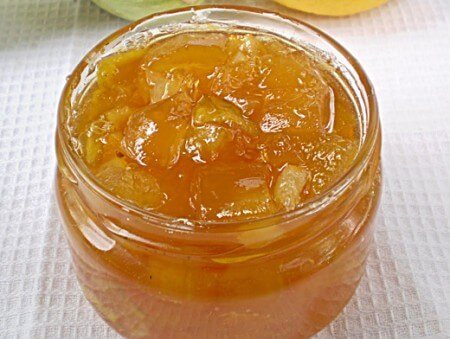
From apples - the safest of all its varieties. Does not cause any unwanted reactions. Apples, especially green and yellow ones, are hypoallergenic foods. It contains a lot of vitamins - B, PP, P, E, A, K, pectin, minerals and coarse fiber. Especially recommended for diseases of the cardiovascular system.
Pear
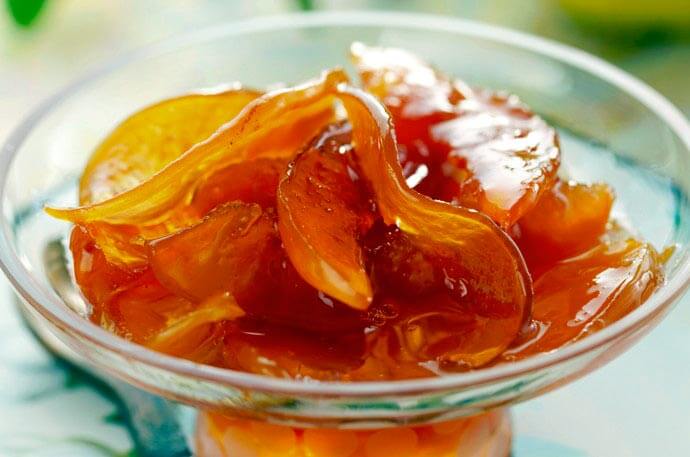
It has a very beautiful golden color, interesting taste and amazing aroma. Pears are useful for anemia, heart failure, kidney stones and bladder stones. They are not contraindicated for diabetes and pancreatic diseases. They are rich in vitamins B, P, folic acid, flavonoids and phytoncides. Allergies to these fruits are very rare, so nursing mothers can eat this product without fear.
Apricot
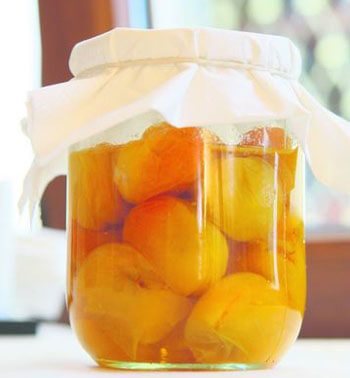
A very aromatic and tasty jam is made from apricots. These fruits are useful for anemia and vitamin deficiency, metabolic disorders, and intoxications. They contain a lot of Mg, Ca, vitamins B, P, K. A nursing mother can also enjoy apricot jam. Temporarily contraindicated only for intestinal disorders. But for constipation, on the contrary, it is indicated. See more details: Apricot jam for breastfeeding.
Blueberry

It has a very rich dark blue, almost black color. Very tasty and very healthy. It contains vitamins B, C, minerals K, P, Mg, melatonin, organic acids, tannins. Blueberry jam can be eaten by nursing mothers if the babies are not allergic to it. It is especially recommended for diseases of the heart, eyes, weak blood vessels, disorders of the gastrointestinal tract, excess weight, diseases of the biliary tract and pancreas. For more details, see Blueberries for breastfeeding
Cherry

Cherry jam is contraindicated only for those mothers whose babies react to the color red. It contains many vitamins - B1, B2, B9, PP, E, minerals and trace elements, organic acids. Cherry is useful for anemia and arterial atherosclerosis. Under no circumstances should you eat cherry pit kernels, as they contain hydrocyanic acid, which is dangerous to humans.
Currant

Black currant is the leader in vitamin C content (see Currants for breastfeeding). Jam made from it is especially indicated for colds, acute respiratory infections, and flu. It has anti-inflammatory and diuretic effects. This berry also contains vitamins B, P, K, E, and folic acid. Black currant enhances the effect of antibiotics.
Raspberry
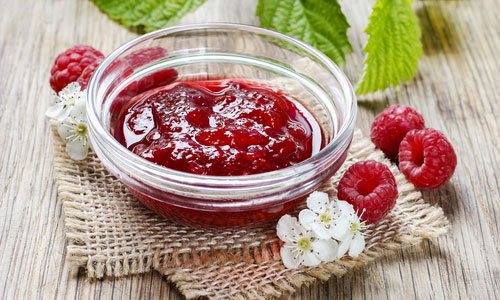
Since childhood, we have also been accustomed to eating raspberry jam for colds. This berry has the ability to relieve heat by increasing sweat production. But it is necessary to drink as much fluid as possible to avoid dehydration. Raspberries are also rich in vitamins A, B, PP, minerals and trace elements. But this berry is allergenic; a nursing mother should eat it with caution.
Strawberry
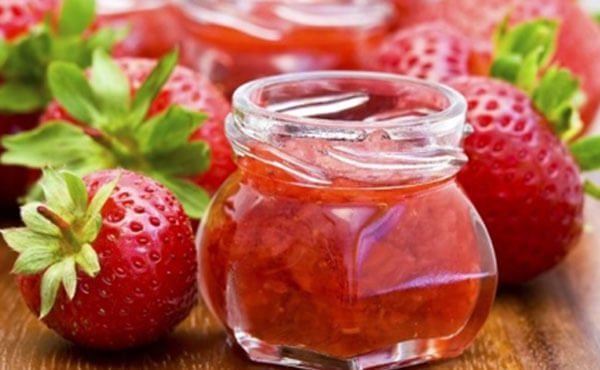
Strawberries and wild strawberries contain just a lot of useful substances. These are vitamins C, B, folic acid, carotene, pectins, organic acids, I, P, K, Ca, etc. Dishes made from them normalize the functioning of the nervous system, brain, lower blood pressure and even suppress the growth of aggressive cancer cells. A nursing mother can eat strawberry jam if the baby or she herself is not allergic to these berries.
Sea buckthorn
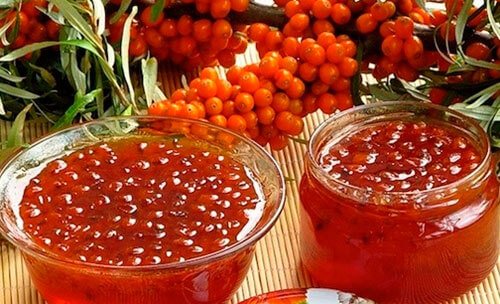
Sea buckthorn jam is bright orange in color and has an unusual taste and aroma. And it is also very useful. It has a positive effect on the condition of blood vessels, is an excellent prevention of vitamin deficiency and atherosclerosis, and normalizes the functioning of the digestive organs. It contains vitamins E, C, B, carotene, fatty acids, pectin, etc. Nursing mothers can eat it in the absence of allergies. See “Sea buckthorn for breastfeeding” for more details.
Plum
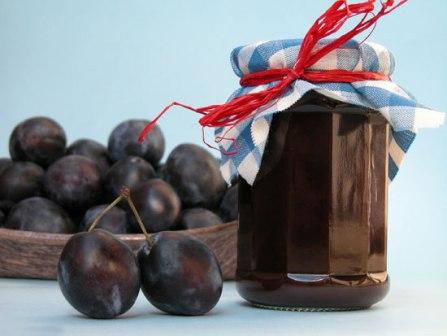
It is also very tasty from plums. It contains dietary fiber, vitamins B, PP, E, K, minerals - Zn, I, Mg, S, Ca. This fruit has a mild laxative and diuretic effect, speeds up metabolism, improves blood composition and the condition of blood vessels. It will be very useful for a nursing mother. We also recommend that you read the article: Can breastfeeding mothers eat plums?
The effect of jam on lactation and milk composition

Since breast milk is the only source of nutrients for the baby, the mother’s task is to provide adequate nutrition. Carbohydrates are no exception. During breastfeeding, it is recommended to increase the daily calorie content of the menu by 450-500 kcal [1].
Given the restrictions on sweets in the diet, homemade jam becomes one of the best options for a source of carbohydrates. At the same time, the milk receives an energy charge and beneficial elements from the fruit.
The famous pediatrician E. O. Komarovsky allows jam in the menu of a nursing mother, but only in moderation. He insists that a satisfied, well-fed mother is the key to high-quality lactation, and therefore the health of the baby. But the doctor emphasizes the word “moderate”.
Sweet foods are introduced into the diet carefully, under close monitoring of the baby’s reaction. In addition, the type of fruit matters. Some varieties of jam are allowed in the diet from the first days of feeding, as the least risky in terms of allergenicity - apple, pear, gooseberry.
What kind of jam can a nursing mother eat: list of popular ones
Previously, it was mistakenly believed that citrus fruits caused allergies in the baby, both raw and cooked, and therefore were allowed in the diet only after a year. However, in reality they do not affect breast milk, since they do not change the pH of maternal plasma [2], and therefore the only contraindication to their use is individual intolerance by the baby or one of the family members (mom, dad).
Table 1 - Properties and timing of administration
| Jam: | Introduction period: | Significant elements, % of daily value: |
| apple | from birth | K – 5% Fe – 7.5% |
| sea buckthorn | from 2 | Vitamin A – 68.9% Vitamins gr. B – 25% Vitamin C – 61.6% Vitamin E – 72% K, Ca, Mg, Fe – 2-5% |
| raspberry | from 3 | Ascorbic acid – 8.5% Vitamins gr. B – 2.5% Vitamin E – 3.5% Potassium, iron – 7% |
| apricot | from 3 | Vitamin A – 22% Cobalt, Potassium – 3% |
| currant | from 5-6 | Vitamin A – 22% Vitamin C – 144% |
| strawberry | from 6 | Vitamin C – 9.3% Vitamin E – 2.5% Potassium, iron – 5.5% |
The introduction dates presented in the table are tentative and based on outdated data. The scientific community has not confirmed the need to introduce a particular product from a certain month.
Sea buckthorn jam
One of the most useful types of jam for breastfeeding is sea buckthorn. After cooking, the berry retains 60-80% of its properties. Action – support of immunity, reproductive function, skin and eye health. The B complex of vitamins is responsible for the coordinated functioning of the nervous system and hematopoiesis. Ascorbic acid helps iron to be absorbed and stimulates the immune response. The antioxidant properties of vitamin E support the heart muscle, gonads, and the structure of cell membranes.
When administered carefully, sea buckthorn jam will become a source of a large complex of useful elements. The properties of the berry, which are preserved after heat treatment, are powerful support for the body of mother and child.
Apple jam
Apple jam during breastfeeding is allowed from the first month of a baby’s life. Minimum allergen, benefits - increasing hemoglobin levels in the blood (important after childbirth), supporting cardiac function.
Raspberry jam
Raspberry jam can be administered during breastfeeding from birth. It is better to try after sea buckthorn if the baby does not react. The benefits of raspberry jam are improved digestion, support of the cardiovascular system, hematopoiesis (increases hemoglobin), and a powerful immunomodulatory effect. Vitamin E prevents aging, regenerates cells, and neutralizes toxins.
Strawberry jam
Strawberry jam during breastfeeding has a similar effect on the body as raspberries, but contains a lower concentration of minerals and vitamin B. The main advantage of the berry is immunity protection.
Apricot jam
Apricot jam contains cobalt - an important element in metabolism and the structure of bone tissue. Stimulates hemoglobin synthesis, increases iron absorption, produces the formation of red blood cells, and participates in the production of RNA and DNA. High content of vitamin A – helps immunity, skin condition, vision function.
Can a nursing mother eat raspberry jam?
Breastfeeding is not accompanied by strict restrictions. It is important to eat foods correctly and introduce them into your diet. Women often ask, is it possible to use jam while breastfeeding? Raspberry jam is allowed. It is very good for health, but it is an allergen, which forces you to adhere to special rules. When used, the product will not harm your baby.
The first month after the birth of a baby is a special time. During this period, the child’s gastrointestinal tract adapts to new nutritional conditions and the external environment. In the first month of a newborn’s life, it is not recommended to eat foods that can cause allergies or severe stress on the gastrointestinal tract, so eating raspberries and its derivatives is prohibited.
Since the product is an allergen, it is recommended to introduce it into the diet after 3-5 months, but sometimes the doctor allows you to eat it earlier. Most often, it does not cause an allergic reaction in the baby, passing through milk exactly after 3 months, when the baby gets used to the external environment. Therefore, if you are interested in what sweets are possible when breastfeeding from 3 months, you can pay attention to this product.
For the first time, it is recommended to eat 1 teaspoon of jam with tea or water. Negative manifestations can usually be noticed within 1–2 days after introduction into the diet. In the case of such strong allergens, doctors recommend observing for about a week. If you do not notice signs of allergies or problems with the gastrointestinal tract, you can gradually increase the dosage. The recommended amount is 1-2 tablespoons per day 3-4 times a week. Raspberry jam can be eaten on its own, added to tea and other drinks, or used in cooking, for example, added to oatmeal.
Table for introducing raspberry jam into the diet.
| Baby's age | How to use |
| 1 month | Strictly prohibited |
| 2 month | It is possible, with the permission of a doctor, in minimal quantities, if your mother or close relatives have never had a negative reaction to raspberries. |
| 3 month | It is allowed to be introduced into the diet on a general basis with 1 teaspoon per day. It is better not to exceed the norm of 1 tablespoon per day. |
| 4th and 5th month | You are allowed to eat 1-2 tablespoons a day several times a week, unless otherwise advised by your doctor. |
Dr. Komarovsky says that the diet of a nursing mother should not change during breastfeeding. It should be familiar and balanced. It is important to eat everything in moderation and observe the baby’s reaction. In addition, he notes the benefits of raspberry tea as a pharmacological remedy, which you can see in the video.

